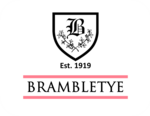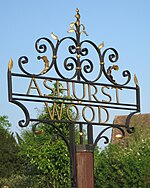Three Bridges–Tunbridge Wells line
1855 establishments in England1967 disestablishments in EnglandBeeching closures in EnglandClosed railway lines in South East EnglandLondon, Brighton and South Coast Railway ... and 7 more
Rail transport in East SussexRail transport in KentRail transport in West SussexRailway lines closed in 1967Railway lines opened in 1855Standard gauge railways in EnglandUse British English from July 2015
The Three Bridges–Tunbridge Wells line is a mostly disused railway line running from Three Bridges (on the Brighton Main Line) in West Sussex to Tunbridge Wells Central in Kent via East Grinstead in West Sussex (East Sussex pre-1974), a distance of 20 miles 74 chains (33.7 km). Opened in 1855, the main section of the line was a casualty of the Beeching Axe – the last train ran on 1 January 1967. The remaining section to Tunbridge Wells closed on 6 July 1985, although the section between Groombridge and Tunbridge Wells West was reopened in 1997 under the auspices of the Spa Valley Railway.
Excerpt from the Wikipedia article Three Bridges–Tunbridge Wells line (License: CC BY-SA 3.0, Authors).Three Bridges–Tunbridge Wells line
Jahnstraße, Verwaltungsgemeinschaft Hockenheim
Geographical coordinates (GPS) Address Phone number Website Nearby Places Show on map
Geographical coordinates (GPS)
| Latitude | Longitude |
|---|---|
| N 51.112222222222 ° | E 0.0080555555555556 ° |
Address
Markus-Schule Grundschule
Jahnstraße
68809 Verwaltungsgemeinschaft Hockenheim
Baden-Württemberg, Deutschland
Open on Google Maps









